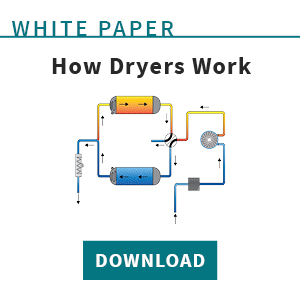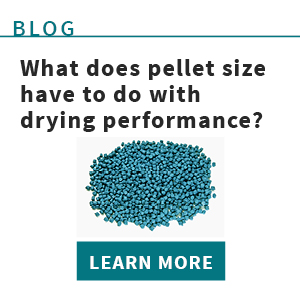True Portability Comes to Waterless Press-Side Dryers for Injection Molding
Sponsored ContentConair’s new line of mobile resin dryers brings a whole new meaning to “portable.” With waterless desiccant drying and conveying combined on a compact, mobile base, these versatile units save on installation costs, utility costs and maintenance.
Share
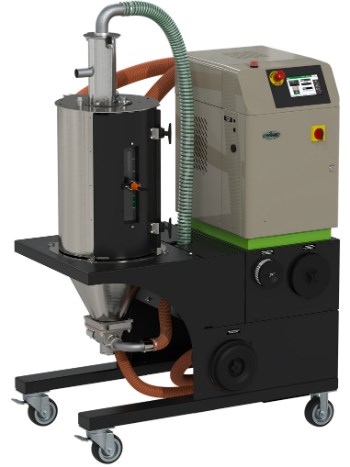
Conair Carousel Plus mobile dryer
When it comes to mobile dryers, how portable, really, is something that’s connected to plumbing? That thought occurred to Conair when they set out to redesign their next generation of mobile dryers. What they came up with is the Carousel Plus line of desiccant dryers that uses an air-to-air intercooling system to eliminate the need for water cooling. Losing the water makes the dryers vastly easier to move around the shop, quicker to set up, and more efficient to operate. While the new dryers have a smaller footprint, Conair says they are substantially more energy efficient than their predecessors yet sacrifice no drop-off in performance.
With the new Carousel Plus dX series, Conair took it a step further by combining a dryer and conveying system on a single yet still very compact base. These units are so easy to move and set up that they bring a whole new level of flexibility to press-side drying. You don’t have to worry about water hookups or how to get material to the dryer. Moreover, they are much more cost-effective to operate and own. Eliminating water requirements reduces installation costs (no plumbing), utility costs (no water) and eliminates maintenance issues such as water scale buildup common with the water-to-air intercooler of yesterday. These new units offer convenience without performance compromise.
The Need for Better Mobile Dryers
With more injection molders getting into hygroscopic resins, the need for effective drying solutions is growing. Central drying and conveying is great for large operations that run the same materials in large volumes. But custom molders or other processors with high changeover rates need to get in and out of runs as quickly as possible. They need to make the best use of their equipment. And they may well need to run a job on different presses with successive runs. In a word, they need flexibility. This is where mobile dryers come in.
But dryers that require dedicated water drops and necessitate auxiliary conveying add non-productive time to the changeover process. They also drive up energy and utility costs, not to mention the money processors spend on hanging the plumbing. This is where the air-to-air dryer comes in.
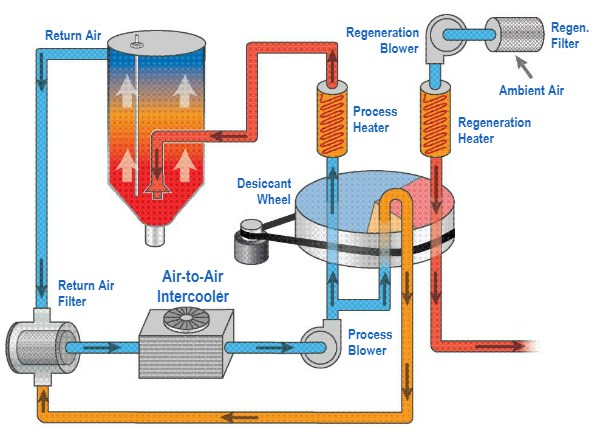
The flow of air in a desiccant dryer.
With desiccant dryers, warm, dry air is forced into the resin hopper to remove moisture from the material. The return air—still somewhat warm, but now moist—is forced through an intercooler unit to cool the air before it flows through the desiccant wheel to remove the excess moisture and then on to the heater to start the next cycle.
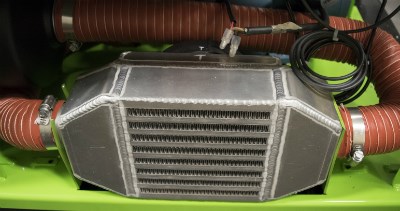
The air-to-air intercooler operates efficiently with no moving parts. Eliminating water cooling makes the dryer more energy efficient, lighter, and easier to service.
With water-to-air intercoolers air is forced over circulating water coils to remove heat, which of course requires an entire circulation system and pump. An air-to-air intercooler is much simpler. It forces air over a series of static fins that function essentially as a heat sink that dissipates the heat. The secret sauce in the Conair design is how they’ve made this simpler process so effective, yet still keep the unit so compact.
A Better Wheel

Inside the sealed rotating canister the honeycomb desiccant media absorbs moisture and can operate for 10 years without degradation of the dryer’s performance capabilities.
Unlike a conventional desiccant dryer, the dX series does not use loose media or beads to absorb water. Beads will break down over time and have to be replaced every year or two. When they are replaced it is very difficult to repack the canister exactly like before. Both of these factors result in variability in the drying process, which then requires routinely tweaking the settings or just living with the inconsistency.
With the new dX design the desiccant is “grown into” a fiberglass wheel that can operate for 10 years or more without breakdown, degradation, or change in performance capabilities. Only basic maintenance such as cleaning of filters and cooling coils is required to keep the dryer in peak condition. Water molecules are adsorbed onto the desiccant surface and held until being driven off by the regeneration cycle in the dryer. This process is completed continuously due to the constant rotating of the desiccant media. This leads to very consistent, steady dew points, and a greater ability to control the process to a precise customer setting.

The Carousel Plus controls allow drying recipes to be stored for different parts and materials that can be used repeatedly, further reducing changeover time.
Better Control
Also crucial to the overall performance of the resin dryers is the new controller. With software developed by Conair, the standard control provides:
- Dew-point control and monitoring
- Energy use reporting
- Heater on-time reporting
- Predictive maintenance
- Stored recipes
Premium units add additional energy-saving features including temperature setback, which automatically adjusts drying air input temperatures to avoid overheating, and an optional drying monitor, which utilizes RTD sensors in the hopper to confirm that proper drying conditions are maintained. Premium units also offer remote access and control capabilities and enhanced monitoring and alarm functions.
The Specs
Processors can still specify a water-to-air system if they want, but the air-to-air design will certainly be more versatile. The air-to-air unit can sustain drying efficiency while handling return air temperatures up to 375°F and dewpoints of -40°F. The dX series dryers range in capacity up to 200 pounds per hour.
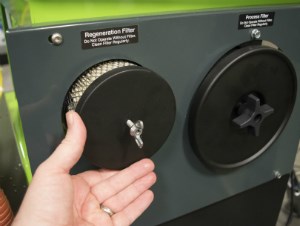
The compact design also makes it easier to access service components such as air filers.
The dX system integrates the dryer with a conveying blower, dust collector and direct-feed vacuum receiver to convey with dry air to the throat of a processing machine. The self-loading option adds an integral hopper loader which allows the dX to load itself. For applications that don’t need conveying, a dX model is available with just a dryer and hopper, and a self-contained vacuum loader can be added.
The same drying features can also be found on the stationary Carousel Plus D series models which run up to 400 pounds per hour of drying capacity. One unit can service up to four injection molding machines.
Make it Easy
Conair’s overall objectives for the original Carousel Plus were to come up with a flexible mobile dryer that is mechanically simple, offers consistent performance, is reliable and is easy to use. In the development process they were able to reduce the weight of the desiccant assembly by 70%, and the part count by 90%. There are no more indexing bed plates, no more cumbersome 4-way valves, and no more messy desiccant beads. In other words, far fewer components to fail or maintain. With all the other enhanced performance features, it sounds like they have exceeded expectations.
Go here for more information on Conair Carousel Plus Dryers.
